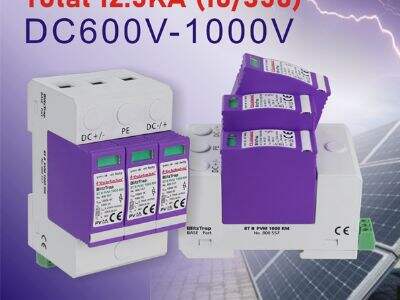There are times, when you use electricity at home, something called a “surge” can occur. A surge is an influx of excess electricity in your electrical system. An example of this can happen when the weather is very stormy, such as during a thunderstorm or when using multiple appliances at once like a washing machine, a microwave, and a computer at the same time. When a surge occurs, it can upend your electronics like your TV, computer, or gaming console. This is why surge protection is so critical to protect your devices.
Surge protection protects your electronics from these power surges. So it works by shuttling excess electricity away from your devices so that they are not harmed. You can use two main types of surge protection: plug-in Solar Surge Protector and whole-house surge protectors.
How Surge Protection Protects Your Home
Plug-in Telebahn surge protectors are small devices that you can plug conveniently into any outlet in the home. These often have multiple outlets on them, so you can plug in multiple devices at the same time. For instance, if you have a plug-in surge protector installed in your living room, you can shield your TV, gaming console and sound system simultaneously. When a surge happens, the plug-in surge protector springs into action, redirecting the excess electricity away from your devices and toward the ground wire, which takes the excess power to ground, keeping your devices safe.
Whole-house surge protectors, on the other hand, are larger and generally more expensive. These are installed within your electrical system by professionals and can prevent surges from impacting your entire home. They function by sending the excess electricity out before it can penetrate your home’s electrical system at all. This type of surge protection is quite helpful for larger surges, that can come from events as powerful as lightning strikes. With a whole-house Surge Protectors, you can ensure that you keep all the electronics in your home safe.
How Surge Protectors Keep You Connected
Surge protection not only protects your electronics, but it also allows you to connect with the world around you. What if a power surge damages your router or modem? But this could mean that you will not be able to connect to the internet, which will be a disaster. Without the internet, you couldn’t watch your favorite shows on Netflix, your online friends would be just imaginary, and you wouldn’t even get help with your homework. Protecting your router and modem with Surge Protector Device can stop this from happening, and you can continue to reap the benefits of being connected.
How Surge Protection Works
Surge protectors contain specialized technology that enables them to operate as they need to. To divert the excess power in such scenarios, they utilize crucial parts such as Metal Oxide Varistors (MOV) and Gas Discharge Tubes (GDT). MOVs are electrical components that can "switch on" under excess power and "switch off" when the flow of electricity returns to normalcy. Another useful component is GDT that can channel the excess power to the ground wire without any hassle.
And surge protectors have a parameter called "clamping voltage. “ This level of electricity is when the surge protector activates, sending the excess electricity away. A lower clamping voltage results in a better surge protector for your electronics. That is why it’s super important to select a surge protector with low clamping voltage, so it can respond quickly to protect your devices.
How Surge Protectors Work In Scientific Terms
Surge protection might seem like magic, but really it is just science doing its thing. BLEEDING AWAY EXTRA ENERGY Fortunately, surge protectors are designed to use electrical components such as metal oxide varistors (MOVs) and gas discharge tubes (GDTs) to divert that excess energy away from your electronics when needed. There is a certain voltage threshold they know by name "clamping voltage" where they understand they must engage to provide effective protection for your devices. Staying Safe with Surge Protection During Even the Largest of Storms or Most Power Loaded Home Days.
Ultimately, you can protect all of your electronics with surge protection, regardless of whether you choose plug-in surge protectors or whole-house surge protectors. This way, your devices will always be safe and sound from power surges. Knowing the basics of surge protection and how the technology that enables it works, can go a long way toward keeping your electronics safe from power surges, allowing you to enjoy being connected to the internet and your favorite devices.

 EN
EN
 AR
AR
 BG
BG
 HR
HR
 CS
CS
 DA
DA
 NL
NL
 FI
FI
 FR
FR
 DE
DE
 EL
EL
 HI
HI
 IT
IT
 JA
JA
 KO
KO
 NO
NO
 PL
PL
 PT
PT
 RO
RO
 RU
RU
 ES
ES
 SV
SV
 CA
CA
 TL
TL
 IW
IW
 ID
ID
 LV
LV
 LT
LT
 SR
SR
 SK
SK
 SL
SL
 UK
UK
 VI
VI
 SQ
SQ
 ET
ET
 GL
GL
 HU
HU
 MT
MT
 TH
TH
 TR
TR
/images/share.png)
